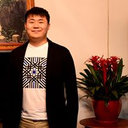The ginsenoside PPD exerts anti-endometriosis effects by suppressing estrogen receptor-mediated inhibition of endometrial stromal cell autophagy and NK cell cytotoxicity.
Հիմնաբառեր
Վերացական
Endometriosis (EMS) is an estrogen-dependent gynecological disease with a low autophagy level of ectopic endometrial stromal cells (eESCs). Impaired NK cell cytotoxic activity is involved in the clearance obstruction of the ectopic endometrial tissue in the abdominopelvic cavity. Protopanaxadiol (PPD) and protopanaxatriol (PPT) are two metabolites of ginsenosides, which have profound biological functions, such as anti-cancer activities. However, the role and mechanism of ginsenosides and metabolites in endometriosis are completely unknown. Here, we found that the compounds PPD, PPT, ginsenoside-Rg3 (G-Rg3), ginsenoside-Rh2 (G-Rh2), and esculentoside A (EsA) led to significant decreases in the viability of eESCs, particularly PPD (IC50 = 30.64 µM). In vitro and in vivo experiments showed that PPD promoted the expression of progesterone receptor (PR) and downregulated the expression of estrogen receptor α (ERα) in eESCs. Treatment with PPD obviously induced the autophagy of eESCs and reversed the inhibitory effect of estrogen on eESC autophagy. In addition, eESCs pretreated with PPD enhanced the cytotoxic activity of NK cells in response to eESCs. PPD decreased the numbers and suppressed the growth of ectopic lesions in a mouse EMS model. These results suggest that PPD plays a role in anti-EMS activation, possibly by restricting estrogen-mediated autophagy regulation and enhancing the cytotoxicity of NK cells. This result provides a scientific basis for potential therapeutic strategies to treat EMS by PPD or further structural modification.


